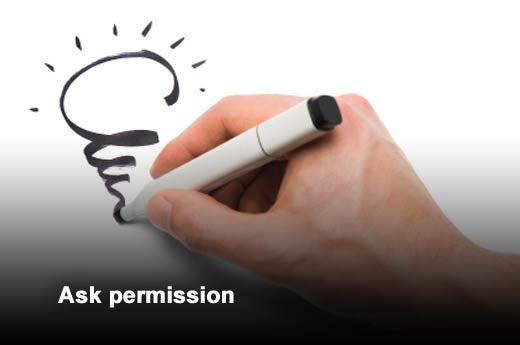Constructive feedback is one of the greatest gifts managers can provide to employees. When delivered properly, the right feedback can reinforce positive behavior and correct any negative performances.
Many managers are reluctant to provide negative feedback, however. Don’t fall into this trap! Use these six tips, identified by Amanda Augustine, career advice expert for TopResume, to give feedback that will help your employees develop and improve your team’s overall performance.
When properly implemented, feedback can be a powerful tool in the workplace. Apply these tips the next time you need to provide negative feedback to a colleague, and they just might thank you.

Click through for six best practices to deliver effective feedback that gets results, as identified by Amanda Augustine, career advice expert for TopResume.

A great manager once told Augustine that you can tell people anything, as long as your feedback comes from a place of caring. It has to be clear from the start that you’re providing this feedback to help the other person – not to hurt or embarrass them.

Before you provide feedback or suggestions, ask your colleague for permission. This can be as simple as “Can I check something out with you?” or “Can I share some observations I’ve made?” When your colleague has given her consent, she is much more likely to approach your suggestions with an open mind.

Avoid using negative phrases that discourage and exclude, such as “I don’t think…” and “You shouldn’t …,” when speaking. Negative language puts people on the defensive or causes them to shut down and disregard your feedback. Instead, be encouraging and use phrases that start with “What if we tried to…?”, “Maybe you could try…”, or “Have you considered doing…?”

You’re not doing your co-worker or direct report any favors by providing vague feedback. Telling John that he has lousy people skills is not constructive or effective. Instead, describe a specific example of the behavior you observed, and explain the effects it has had on you or others. Then, provide clear suggestions as to how he could do things differently.

Feedback is best given shortly after you’ve observed the behavior or event. Do not wait a month after a bad incident to broach the subject with your colleague. If the issue is rather small, perhaps it can wait until your weekly one-on-one. However, if the incident was more severe, address it as soon as possible. Just make sure you have taken enough time to properly prepare so you can provide solid, actionable feedback. The same goes for positive reinforcement – praise your colleague’s work in a timely manner.

Identify the best place and time to discuss the matter with your colleague. Are you planning to give feedback to a direct report, your manager, or a peer in your department? How serious is the matter? This will help you decide if it’s better to have the conversation in a conference room or over lunch. Wherever you decide to talk, make sure it’s private so you can have a candid conversation without worrying about others overhearing you.















